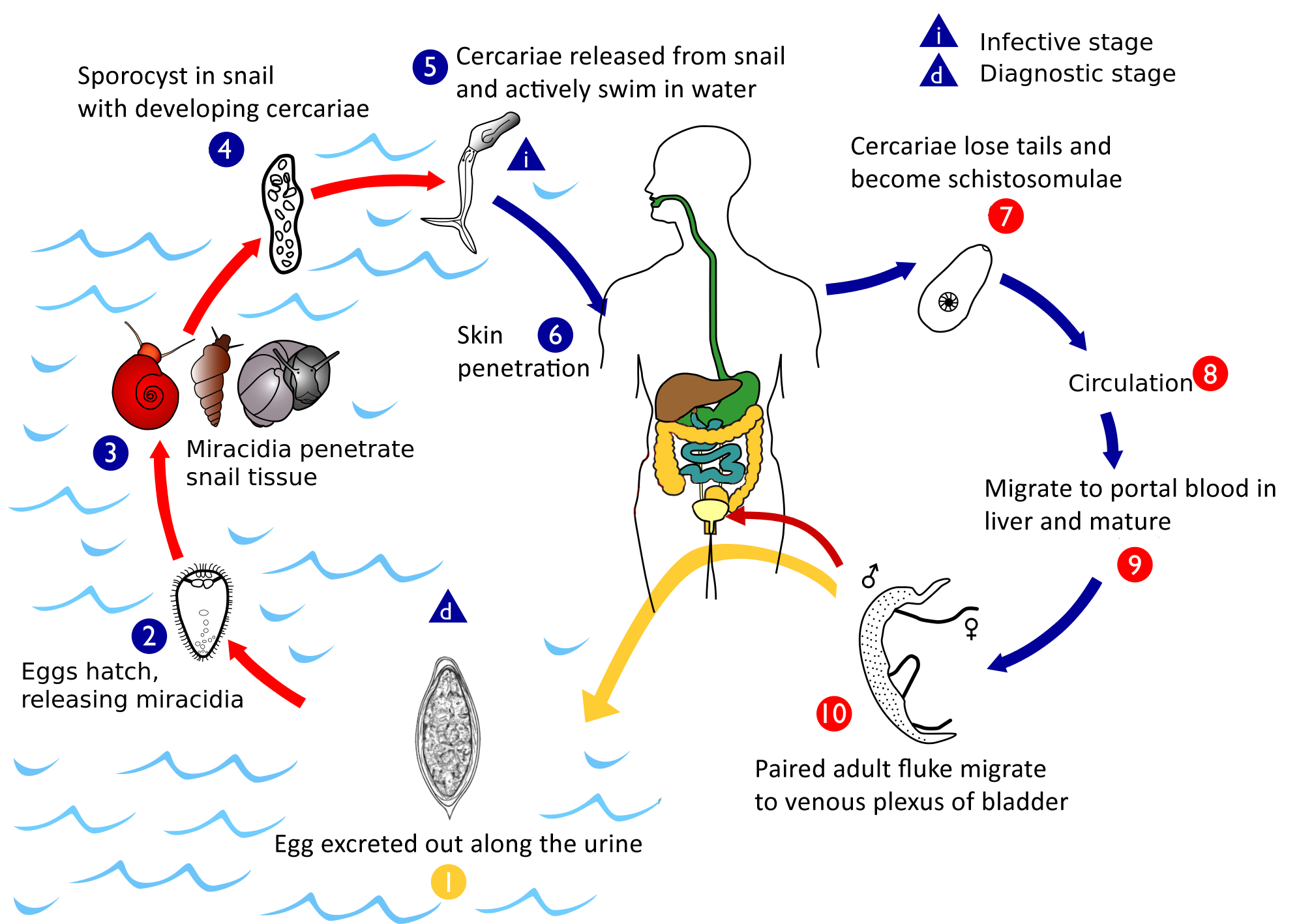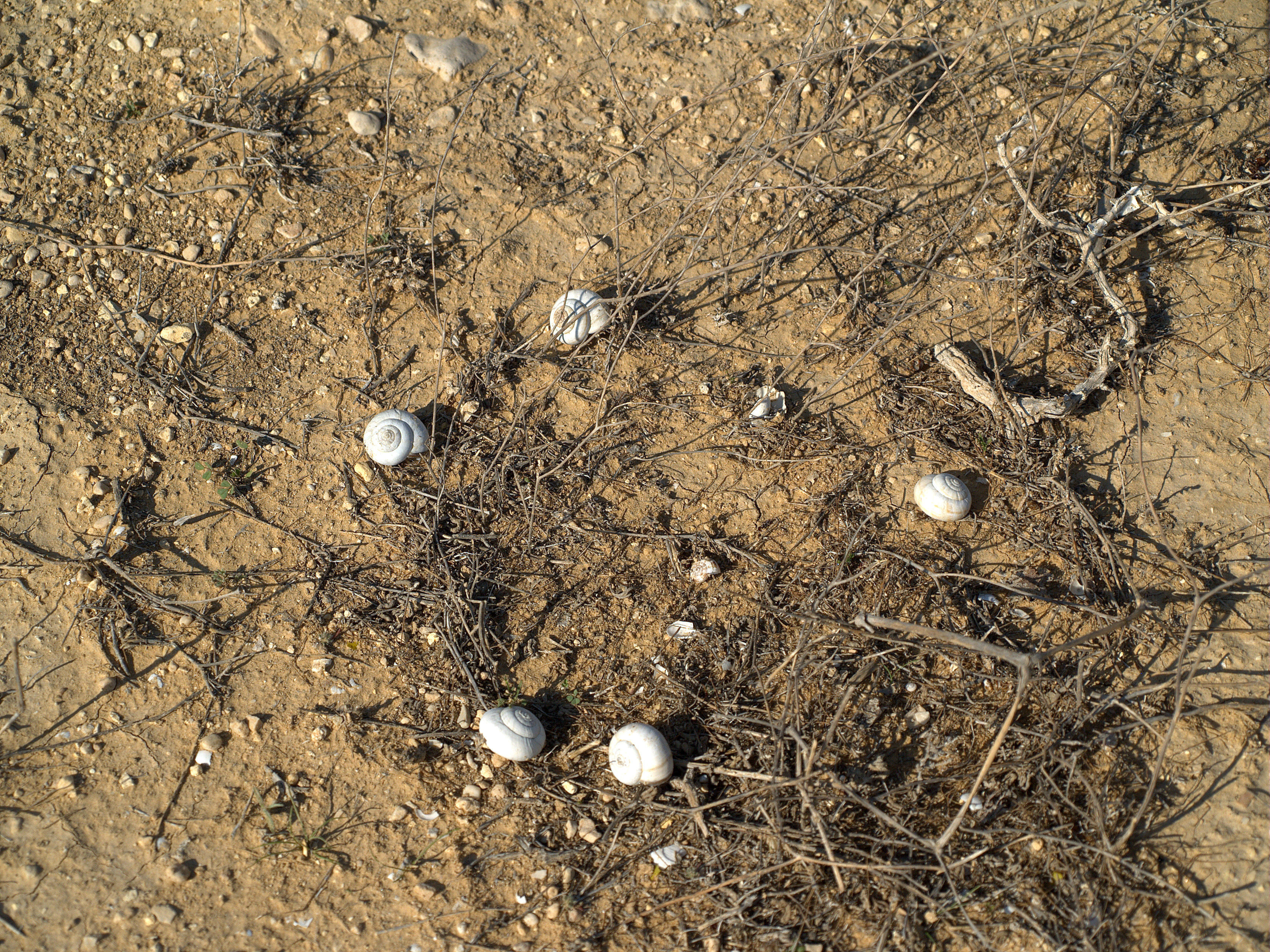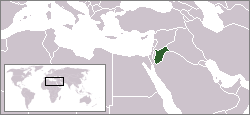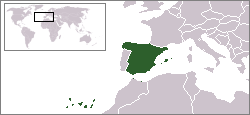|
Bulinus Truncatus
''Bulinus truncatus'' is a species of air-breathing freshwater snail with a sinistral shell, an aquatic pulmonate gastropod mollusk in the subfamily Bulininae of the family Bulinidae, the ram's horn snails and the like. MolluscaBase eds. (2021). MolluscaBase. Bulinus truncatus (Audouin, 1827). Accessed through: World Register of Marine Species at: http://www.marinespecies.org/aphia.php?p=taxdetails&id=716338 on 2022-01-14 ;Subspecies: * ''Bulinus truncatus contortus'' (Michaud, 1829) (synonym: ''Physa contorta'' Michaud, 1829 ) * ''Bulinus truncatus rivularis'' (Philippi, 1836) * ''Bulinus truncatus truncatus'' (Audouin, 1827) Distribution Distribution of ''Bulinus truncatus'' include: *Africa: Egypt, Morocco Northern Sahara, D.R. Congo, Malawi and Ethiopia. * in Ferlo Valley, Western Africa: Senegal Sarr A., Kinzelbach R. & Diouf M. (2011, in press). "Diversité spécifique et écologie des mollusques continenatux de la basse vallée du Ferlo (Sénégal). pecific dive ... [...More Info...] [...Related Items...] OR: [Wikipedia] [Google] [Baidu] |
Jean Victoir Audouin
Jean Victor Audouin (27 April 1797 – 9 November 1841), sometimes Victor Audouin, was a French naturalist, an entomologist, herpetologist, ornithologist, and malacologist. Biography Audouin was born in Paris and was educated in the field of medicine. In 1824 he was appointed assistant to Pierre André Latreille, professor of entomology at the Muséum National d'Histoire Naturelle, where in 1833 he became Latreille's successor. In 1838 he became a member of the French Academy of Sciences. His principal work, ''Histoire des insectes nuisibles à la vigne'' (1842), was completed after his death by Henri Milne-Edwards and Émile Blanchard. Many of his papers appeared in the '' Annales des sciences naturelles'', which, with Adolphe Theodore Brongniart and Jean-Baptiste Dumas, he founded in 1824, as well as in the proceedings of the Société entomologique de France, of which he was one of the founders in 1832. [...More Info...] [...Related Items...] OR: [Wikipedia] [Google] [Baidu] |
AnimalBase
AnimalBase is a project brought to life in 2004 and is maintained by the University of Göttingen, Germany. The goal of the AnimalBase project is to digitize early zoological literature, provide copyright-free open access to zoological works, and provide manually verified lists of names of zoological genera and species as a free resource for the public. AnimalBase contributed to opening up the classical taxonomic literature, which is considered as useful because access to early literature (especially for the late 18th century) can be difficult for researchers who need the old sources for their taxonomic research. AnimalBase data are public domain. The public use of AnimalBase data is not restricted or conditioned.AnimalBase Project Group, 2005-2010. AnimalBase. Early zoological literature online. World wide web electronic publication http://www.animalbase.uni-goettingen.de accessed 30 July 2010. AnimalBase covers all zoological disciplines. In the field of biodiversity informatics A ... [...More Info...] [...Related Items...] OR: [Wikipedia] [Google] [Baidu] |
Paramphistomum Microbothrium
''Paramphistomum'' is a genus of parasitic flatworms belonging to the digenetic trematodes. It includes flukes which are mostly parasitising livestock ruminants, as well as some wild mammals. They are responsible for the serious disease called paramphistomiasis, also known as amphistomosis, especially in cattle and sheep. Its symptoms include profuse diarrhoea, anaemia, lethargy, and often result in death if untreated. They are found throughout the world, and most abundantly in livestock farming regions such as Australia, Asia, Africa, Eastern Europe, and Russia. The generic name was introduced by F. Fischoeder in 1901 for the replacement of the then existing genus ''Amphistoma'' (Rudolphi, 1809). Under the new genus he redescribed both ''Paramphistomum cervi'' and ''P. bothriophoron'' and designated the former as the type species. Species Due to striking resemblance with each other and with other amphistomes, a number of described species are known to be synonymous. Some impor ... [...More Info...] [...Related Items...] OR: [Wikipedia] [Google] [Baidu] |
Paramphistomum Cervi
''Paramphistomum cervi'', the type species of ''Paramphistomum'', is a parasitic flat worm belonging to the class Trematoda. It is a tiny fluke mostly parasitising livestock ruminants, as well as some wild mammals. Uniquely, unlike most parasites, the adult worms are relatively harmless, but it is the developing juveniles that cause serious disease called paramphistomiasis (or classically amphistomosis), especially in cattle and sheep. Its symptoms include profuse diarrhoea, anaemia, lethargy, and often result in death if untreated. It can be found in many regions of the world, including Australia, Asia, Africa, Eastern Europe, and Russia. It is most commonly found in tropical and subtropical regions. The most debilitating cases are reported in Europe from Bulgaria, Italy, France, and Poland and also in Asia from Thailand, India, and China. The parasitic infection was first described from Punjab, India. Description Adult ''P. cervi'' is conical in shape, the anterior end taper ... [...More Info...] [...Related Items...] OR: [Wikipedia] [Google] [Baidu] |
Schistosoma Haematobium
''Schistosoma haematobium'' (urinary blood fluke) is a species of digenetic trematode, belonging to a group (genus) of blood flukes (''Schistosoma''). It is found in Africa and the Middle East. It is the major agent of schistosomiasis, the most prevalent parasitic infection in humans. It is the only blood fluke that infects the urinary tract, causing urinary schistosomiasis, and is the leading cause of bladder cancer (only next to tobacco smoking). The diseases are caused by the eggs. Adults are found in the venous plexuses around the urinary bladder and the released eggs travels to the wall of the urine bladder causing haematuria and fibrosis of the bladder. The bladder becomes calcified, and there is increased pressure on ureters and kidneys otherwise known as hydronephrosis. Inflammation of the genitals due to ''S. haematobium'' may contribute to the propagation of HIV. ''S. haematobium'' was the first blood fluke discovered. Theodor Bilharz, a German surgeon working in Cair ... [...More Info...] [...Related Items...] OR: [Wikipedia] [Google] [Baidu] |
Intermediate Host
In biology and medicine, a host is a larger organism that harbours a smaller organism; whether a parasitic, a mutualistic, or a commensalist ''guest'' (symbiont). The guest is typically provided with nourishment and shelter. Examples include animals playing host to parasitic worms (e.g. nematodes), cells harbouring pathogenic (disease-causing) viruses, a bean plant hosting mutualistic (helpful) nitrogen-fixing bacteria. More specifically in botany, a host plant supplies food resources to micropredators, which have an evolutionarily stable relationship with their hosts similar to ectoparasitism. The host range is the collection of hosts that an organism can use as a partner. Symbiosis Symbiosis spans a wide variety of possible relationships between organisms, differing in their permanence and their effects on the two parties. If one of the partners in an association is much larger than the other, it is generally known as the host. In parasitism, the parasite benefits at the ... [...More Info...] [...Related Items...] OR: [Wikipedia] [Google] [Baidu] |
List Of Non-marine Molluscs Of Israel
Non-marine molluscs of Israel are a part of the molluscan fauna of Israel. A number of species of non-marine molluscs are found in the wild in Israel. In addition, a number of gastropod species are reared in captivity in greenhouses, aquaria and terraria. Freshwater gastropods Land gastropods Land gastropods in Israel include Aciculidae * '' Acicula palaestinensis'' Forcart, 1981 Pomatiidae * ''Pomatias glaucus'' (G. B. Sowerby II, 1843) (usually under the synonymous name ''Pomatias olivieri'' (Charpentier, 1847)Raz S., Schwartz N. P., Mienis H. K., Nevo E. & Graham J. H. (2012). "Fluctuating Helical Asymmetry and Morphology of Snails (Gastropoda) in Divergent Microhabitats at 'Evolution Canyons I and II,’ Israel". '' PLoS ONE'' 7(7): e41840. .) Ellobiidae * ''Carychium minimum'' O. F. Müller, 1774 Succineidae * '' Novisuccinea hortensis'' (Reinhardt, 1877) - non-indigenous * ''Novisuccinea ovalis'' (Say, 1817) - non-indigenous * ''Oxyloma elegans'' (Risso, 1826) ... [...More Info...] [...Related Items...] OR: [Wikipedia] [Google] [Baidu] |
List Of Non-marine Molluscs Of Jordan
The non-marine mollusks of Jordan are a part of the Wildlife of Jordan#Fauna, fauna of Jordan. That country is land-locked and therefore it has no marine molluscs, only land and freshwater species, including snails, slugs, freshwater clams and freshwater mussels. There are ?? species of Gastropoda, gastropods (19 species of freshwater gastropods, ?? species of land gastropods) and ?? species of freshwater Bivalvia, bivalves living in the wild. ;Summary table of number of species Freshwater gastropods Neritidae *''Theodoxus jordani'' (Sowerby, 1844)Amr Z. S. & Abu Baker M. (2004). "Freshwater snails of Jordan". ''Denisia'' 14: 221-22PDF *''Theodoxus macrii'' (Sowerby, 1844) Bithyniidae *''Bithynia philalensis'' (Conrad, 1852) Valvatidae *''Valvata saulcyi'' Bourguignat, 1853 Cochliopidae * ''Eupaludestrina contempta'' (Dautzenberg, 1894) * ''Eupaludestrina longiscata'' (Bourguignat, 1856) * ''Pyrgophorus coronatus'' (L. Pfeiffer, 1840)- non-indigenous Hydrobiidae *''Globul ... [...More Info...] [...Related Items...] OR: [Wikipedia] [Google] [Baidu] |
List Of Non-marine Molluscs Of Spain
The non-marine molluscs of Spain are a part of the molluscan fauna of Spain. Non-marine molluscs of the Canary Islands are listed separately. There are more than 300 species of non-marine molluscs living in the wild in Spain. Freshwater gastropods Neritidae * ''Theodoxus fluviatilis'' (Linnaeus, 1758) Ampullariidae * ''Pomacea insularum'' (d'Orbigni, 1835) - Invasive species Viviparidae * ''Cipangopaludina chinensis'' (J. E. Gray, 1833) - Invasive species * ''Sinotaia quadrata'' (Benson, 1842) - Invasive species Melanopsidae * '' Melanopsis tricarinata dufouri'' * '' Melanopsis penchinati'' Bourguignat, 1868 * ''Melanopsis praemorsa'' (Linnaeus, 1758) Thiaridae * ''Melanoides tuberculata'' (O. F. Müller, 1774) - Invasive species Amnicolidae * '' Bythinella andorrensis andorrensis'' (Paladilhe, 1874) * '' Bythinella batalleri'' Bofill, 1925 - endemic to Spain **''Bythinella batalleri batalleri'' Bofill, 1925 - endemic to Spain **''Bythinella batalleri cuenca'' Boete ... [...More Info...] [...Related Items...] OR: [Wikipedia] [Google] [Baidu] |
Catalonia
Catalonia (; ca, Catalunya ; Aranese Occitan: ''Catalonha'' ; es, Cataluña ) is an autonomous community of Spain, designated as a ''nationality'' by its Statute of Autonomy. Most of the territory (except the Val d'Aran) lies on the northeast of the Iberian Peninsula, to the south of the Pyrenees mountain range. Catalonia is administratively divided into four provinces: Barcelona, Girona, Lleida, and Tarragona. The capital and largest city, Barcelona is the second-most populated municipality in Spain and the fifth-most populous urban area in the European Union.Demographia: World Urban Areas – Demographia, April 2018 Current day Catalonia comprises most of the medieval and early modern Principality o ... [...More Info...] [...Related Items...] OR: [Wikipedia] [Google] [Baidu] |
Province Of Alicante
Alicante ( ca-valencia, Alacant) is a province of eastern Spain, in the southern part of the Valencian Community. It is the second most populated Valencian province. Likewise, the second and third biggest cities in the Valencian Community (Alicante and Elche, respectively) are located in this province. Alicante is bordered by the provinces of Murcia on the southwest, Albacete on the west, Valencia on the north, and the Mediterranean Sea on the east. The province is named after its capital, the city of Alicante. Territory, population and resources According to the 2018 population data, Alicante ranks as the fourth most populous province in Spain (after Madrid, Barcelona and Valencia), with 1,838,819 inhabitants. Cities with more than 50,000 inhabitants in the province are Alicante (334,757 inhabitants), Elche (230,112), Torrevieja (101,792), Orihuela (86,164), Benidorm (71,034), Alcoy (61,552), Elda (55,168), and San Vicente del Raspeig (53,126). [...More Info...] [...Related Items...] OR: [Wikipedia] [Google] [Baidu] |

.jpg)



